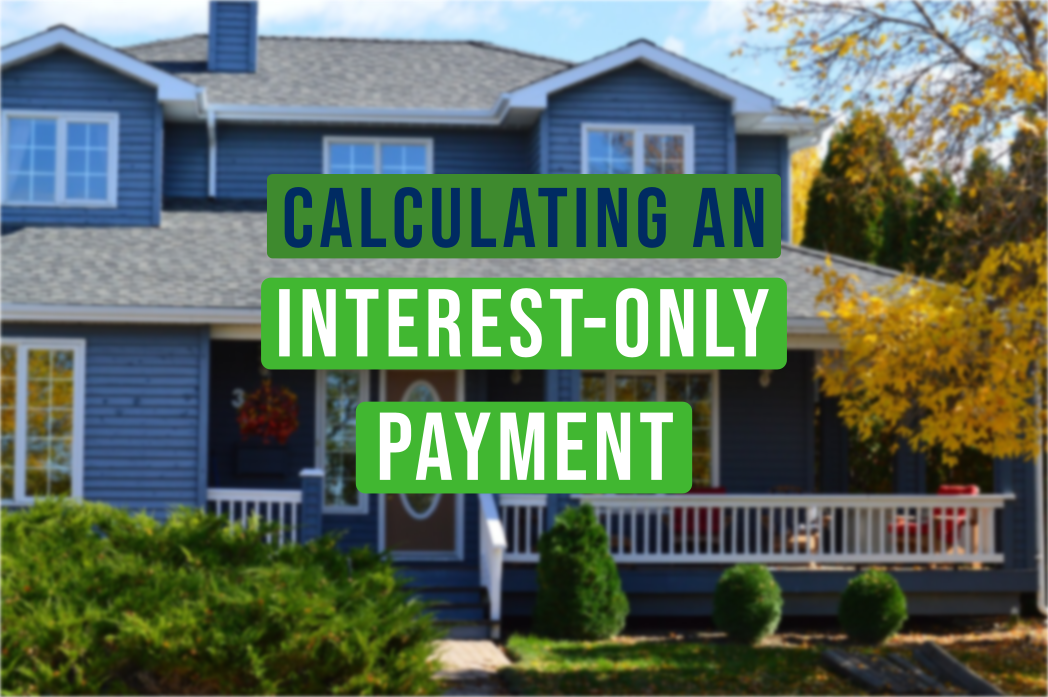Interest-Only Loan Part 1: Calculating the Interest-Only Payment
Categories: Blog Posts
Will an IO loan really save you money? Find out by calculating the interest-only payment.
There are two parts to an interest-only loan. Part one is just interest, and part two is the paydown, or amortization.
Typically, the interest-only period is 5 or 10 years where your only cost is interest. You aren’t required to pay down the principal at all during that time. So for, say, 10 years, you pay interest, but your loan amount stays the same.
Keep in mind, with an interest-only loan, you always have the option to pay down the principal. These loans typically don’t come with a prepayment fee.
Calculating Interest-Only Payment Example
Find the numbers relevant to your deals, and you can follow along by calculating the interest-only payment. You might need a loan for $500,000, or maybe just $100,000. For our example, we’ll use $300,000 as our loan amount.
The interest-only phase of interest-only DSCR loans uses one simple formula.
First, multiply the loan amount by the interest rate. This gives you the yearly interest. Divide that number by 12 (for the 12 months in a year) to get your monthly payment. The formula looks like this:
Loan Amount x Interest Rate = Yearly Interest
Yearly Interest ÷ 12 = Monthly Interest
We’ll use 8% as our example interest rate. So our equation would be:
$300,000 × .08 = $24,000
$24,000 ÷ 12 = $2,000
As long as you don’t pay down any principal during the interest-only period, your payments will be $2,000/month. This $2,000 goes directly to the bank. Your loan amount will remain $300,000, unless you choose to make an extra payment toward the principal.
Calculating the Interest-Only Payment While Paying Principal
Every time you opt into a principal payment during the interest-only period, your monthly payment changes.
For example, let’s say you pay down $20,000 from your loan, leaving the total loan amount as $280,000. You can re-use the previous formula with this new loan amount to get your new monthly payment:
$280,000 × .08 = $22,400
$22,400 ÷ 12 = $1,866
If you chose to pay down your principal by $20,000, your new monthly payment of interest would be $1,866.
How Annual Interest Works on Interest-Only Loans
Don’t let the idea of “annual” interest trip you up. For these interest-only DSCR loans, interest isn’t calculated once from January to December. Instead, the bank will do this formula each month for your loan using your current principal.
Remember that this interest is your monthly loan payment, but it is not your property’s total monthly expenses. If your loan is a DSCR, you also have to consider taxes, insurance, and HOA fees to know your actual monthly expenses.
Pros of Interest-Only Loans
There are two major advantages of interest-only loans:
- Cash Flow – Interest-only loans lower your payments, which makes for less money out and more money in. With the interest-only period, you can do deals that would never work with a typical loan payment.
- Flexible Refinance – You can refinance most interest-only loans at any time (dependent on the lender’s prepay policy). It can be a great strategy to use an interest-only loan for the next four or five years while rates are high. When rates come back down, you can refinance into another loan product that will build equity.
Read the full article here.
Watch the video here:











